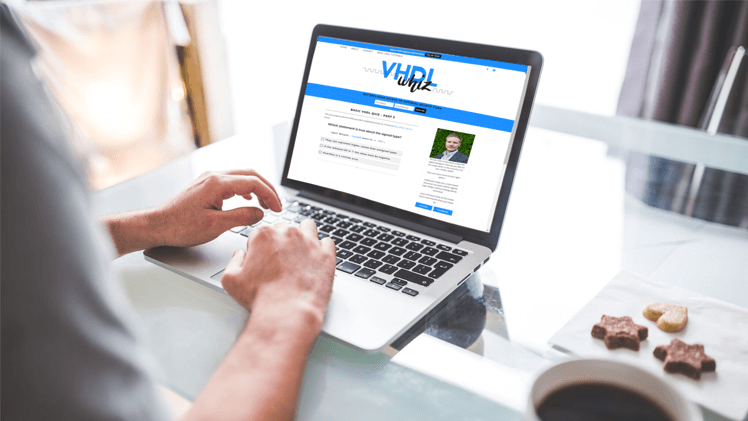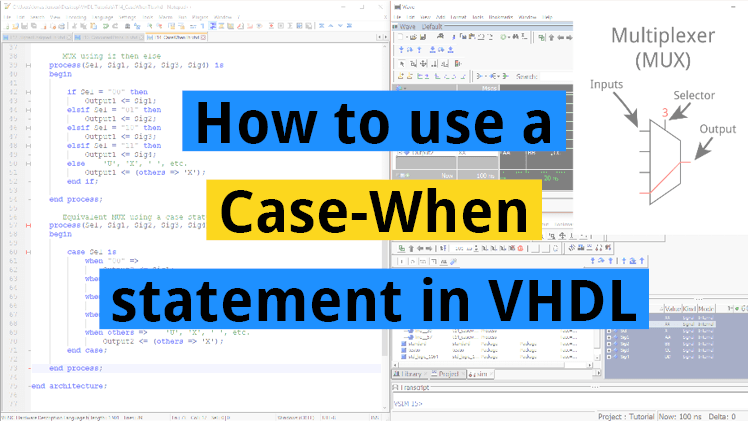I’m from Norway, but I live in Bangkok, Thailand. Before I started VHDLwhiz, I worked as an FPGA engineer in the defense industry. I earned my master’s degree in informatics at the University of Oslo.
Similar Posts

How to use Wait On and Wait Until in VHDL
In the previous tutorial we learned the main differences between signals and variables. We learned that signals have a broader scope than variables, which are only accessible within one process. So how can we use signals for communication between several processes? We have already learned to use wait; to wait infinitely, and wait for to…

Basic VHDL quiz – Part 3
Test your progress with this VHDL quiz after completing tutorials 12-17 from the Basic VHDL Tutorial series!

How to create a concurrent statement in VHDL
A concurrent statement in VHDL is a signal assignment within the architecture, but outside of a normal process construct. The concurrent statement is also referred to as a concurrent assignment or concurrent process. When you create a concurrent statement, you are actually creating a process with certain, clearly defined characteristics. Concurrent statements are always equivalent…

Why you always need a testbench
As most hardware engineers, I started off my computer science career by learning a sequential programming language. The first language I learned at the University of Oslo was Java. While it’s not considered to be the most exciting language today, at the time, Java was at the pinnacle of its popularity. The engineers who built…

How to use a Case-When statement in VHDL
The Case-When statement will cause the program to take one out of multiple different paths, depending on the value of a signal, variable, or expression. It’s a more elegant alternative to an If-Then-Elsif-Else statement with multiple Elsif’s. Other programming languages have similar constructs, using keywords such as a switch, case, or select. Among other things,…

How to use the most common VHDL type: std_logic
The most common type used in VHDL is the std_logic. Think of this type as a single bit, the digital information carried by a single physical wire. The std_logic gives us a more fine-grained control over the resources in our design than the integer type, which we have been using in the previous tutorials. Normally,…

First of all, thank you so very much!
These are by far the most comprehensible tutorials I have come across like ever!
Brilliant work.
So here my two cents out of gratitude:
Basic VHDL Quiz – part 4
Which statement is not true?
Answer 3 : The return statement cannot be omitted.
-> Correct
So the return statement CAN be omitted???
“Unlike in most other programming languages, the return keyword is mandatory in functions in VHDL.”
Confused by double negation. Me or you 😉
Good catch! I’ve changed the answer now. I was trying to make you think, but in the process I confused myself too 🙂
“The return-keyword cannot be used in a procedure”. I believe that this is incorrect, e.g.
https://web.archive.org/web/20200629023040/http://vhdl.renerta.com:80/source/vhd00060.htm
It is true, of course, that you cannot return a value with it, that’s the only (?) difference between procedures and functions. But, as in other languages, you can use “return” as control flow statement to “force an exit”.
You are right! I missed the possibility of using return statements in procedures without returning a value. According to the Renata link you posted, functions must return a value, while procedures can have return statements, but then without a return value.
I am changing this question.